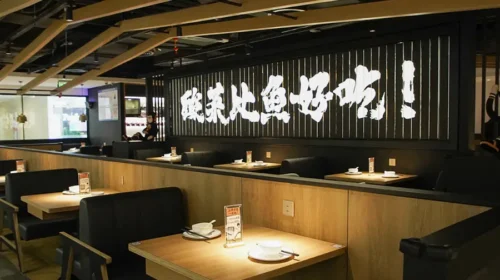China’s Box Office Devil Ne Zha, and Burger King’s China Flip

By Doug Young & Rene Vanguestaine
The Chinese market remains a land of extremes, delivering both record-shattering cultural wins and sharp corporate pivots. Two recent developments — the unprecedented success of the animated film “Ne Zha 2” at the box office and the consolidation by Western fast-food chains over their China operations — offer a window into the opportunities and obstacles of this dynamic landscape.
Ne Zha: a Homegrown Hit, a Global Puzzle
The sequel to 2019’s Ne Zha has electrified the box office, raking in $1.8 billion worldwide, with China driving the bulk of that haul. After a lackluster 2024, this success has sparked hope for the country’s film industry. But questions persist: Does this signal a broader recovery, or is it just a flash in the pan?
The film’s triumph is deeply rooted in its cultural DNA. Drawing from Chinese mythology and rich with nuanced characters, Ne Zha strikes a chord with domestic audiences — a strength that doubles as its Achilles’ heel abroad. Western viewers, unfamiliar with the original or the cultural touchstones woven into the story, may find it impenetrable. Subtitles only widen the gap for mainstream appeal.
This domestic juggernaut highlights a familiar pattern in China’s entertainment scene: blockbusters often lean on localized storytelling rather than universal themes. As the saying goes, “One lark doesn’t make a spring.” The Chinese film industry’s rebound still feels fragile, buoyed by isolated hits rather than a steady resurgence. For Chinese cinema to claim global clout, it must bridge cultural divides with narratives that resonate beyond its borders — a trick Hollywood has long perfected through accessible plots and savvy dubbing.
Fast-Food Chains: Betting on Control
On the corporate front, Western fast-food giants are rethinking their China playbook. Burger King’s parent, Restaurant Brands International, recently shelled out $158 million to buy out its local joint venture partner, taking full ownership of its China operations. This move signals frustration with lackluster partnerships and a push for greater control in a post-pandemic market.
While we’ve seen similar recent moves involving McDonald’s and Popeyes operations in China, it might be premature to call this an “exodus” from the Chinese market. Instead, it’s more accurate to view it as a strategic decision to regain control over operations where local partnerships have not yielded the expected results. The complexities of operating in China — cultural differences, political challenges, and a rapidly shifting consumer landscape — have undoubtedly played a role in these decisions. Moreover, this is not unique to China; businesses around the world have frequently made similar moves when they felt their partnerships were underperforming.
Starbucks offers a compelling precedent, thriving in China for over 15 years after shifting to direct control following early struggles with partners. Yum China, by contrast, took a different approach by spinning off its China operations, taking the new entity public, and bringing in other investors. In both cases, local teams were empowered to adapt to the unique dynamics of the market, proving that success in China is achievable with the right strategy and local expertise.
However, even with these successful examples, the reality is that the Chinese market has become increasingly difficult for many Western brands, especially after the pandemic. The challenges of operating in China’s fast-food sector are undeniable, and companies must continually reassess their strategies to stay relevant.
About China Inc
China Inc by Bamboo Works discusses the latest developments on Chinese companies listed in Hong Kong and the United States to drive informed decision-making for investors and others interested in this dynamic group of companies.
Subscribe to China Inc on your favorite app:







